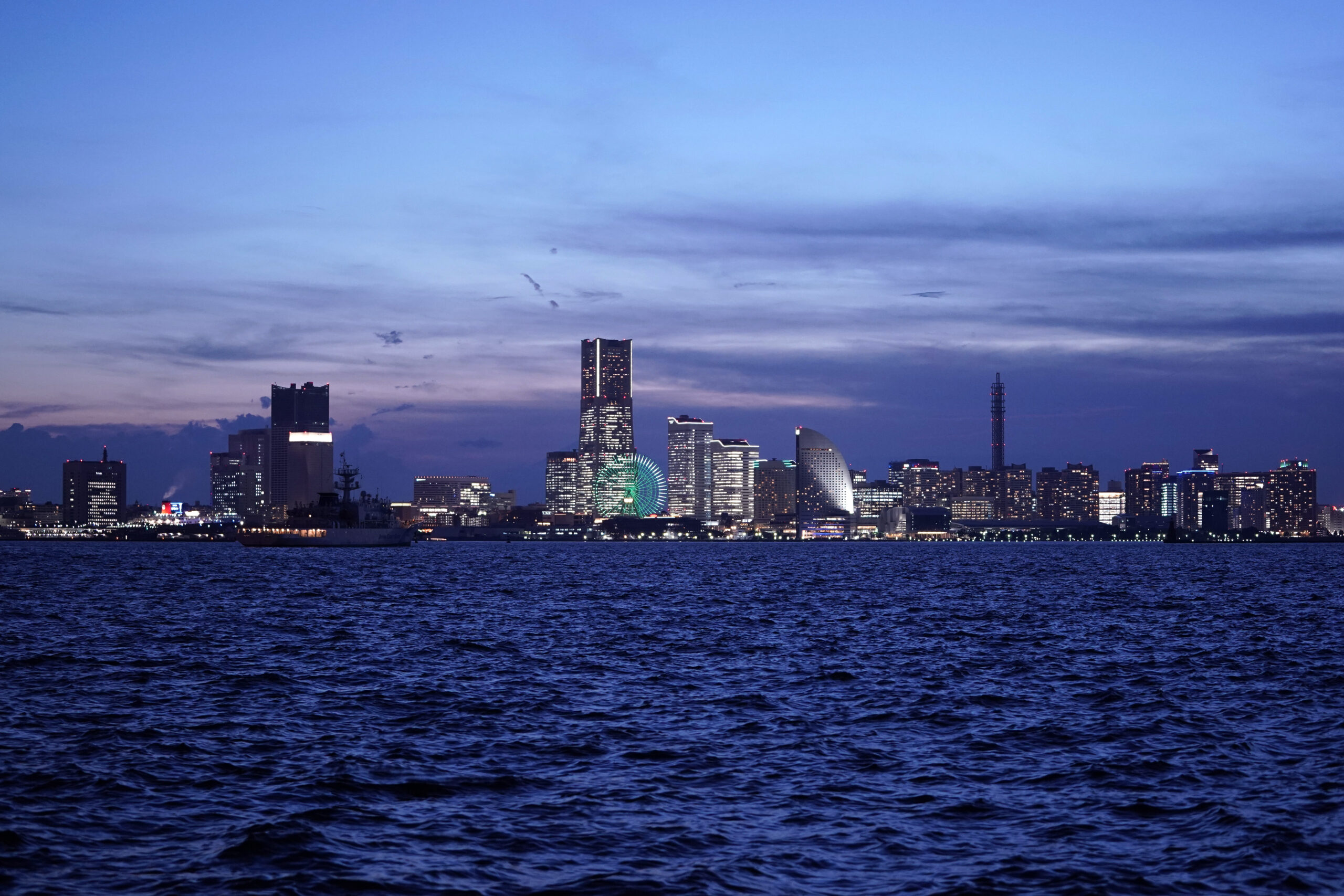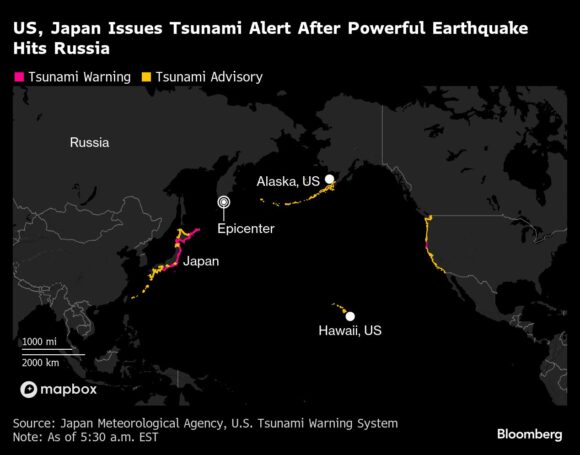Coastal regions from Chile to the western U.S. were on edge after a powerful earthquake in Russia’s Far East triggered a tsunami that rippled across the Pacific, though warnings in Hawaii and Japan were downgraded.
Four-foot waves (1.2-meter) were recorded in Hawaii, with smaller waves hitting coastal areas of California and Indonesia. Evacuees in Hawaii and Japan were allowed to return home and warnings in Shanghai were canceled, but authorities cautioned that waves would continue to slam coastlines throughout the day.
Tsunami warnings were still in place along California’s northern coast near the Oregon border, and officials said waves may reach Chile, Australia and even Antarctica.
“Everything has been OK so far, we haven’t seen a big wave,” Hawaii Governor Josh Green said earlier on Wednesday. Water was seen receding from the coastline, which can be a sign of an imminent tsunami, and “we expect two to three hours at least until we can call all clear,” he said.
U.S. Secretary of Homeland Security told reporters Wednesday that the agency anticipates “minimal impact” for the country’s West Coast from the tsunami.
Chile, hit by a major earthquake and devastating tsunami in 2010, is implementing coastal evacuation protocols in high-risk areas. Senapred, which is in charge of disaster risk management, declared a red alert Wednesday for tsunamis for municipalities along the continental coastline.
Authorities ordered evacuations to begin on Easter Island. In an X post, President Gabriel Boric called on citizens to “stay calm” and follow instructions on evacuations.
The magnitude-8.8 quake struck at a depth of 21 kilometers off Russia’s Kamchatka Peninsula on Wednesday morning local time, triggering tsunami alerts from Japan and China to the U.S. and Canada, and as far away as Indonesia and New Zealand. An earthquake of that scale marks the strongest worldwide since 2011, according to recent data from the U.S. Geological Survey, and the most powerful in Russia since 1952.
The tremor will likely end up in the top ten largest in recorded history, said Karissa Rosenberger, a geo-physicist with the USGS. Earthquake intensity is based on a logarithmic scale, which means every step in magnitude is a 10 times increase in strength. So the 8.8 quake is ten times stronger than 7.8 and thousands of time stronger than the 3.8 temblor that hit New England in January.
Aftershocks will likely continue for months and there is no way to predict if there will be another massive shake, Rosenberger said. A 7.4 magnitude that hit the region on July 20 was the foreshock to the latest event.
The quake likely came from a shallow undersea “mega-fault,” said Rebecca Bell, a professor of tectonics at Imperial College London. “These are the largest faults on Earth and are capable of hosting the largest earthquakes,” she said.
Japan has seen minimal impact so far. The Japan Meteorological Agency downgraded all of its tsunami warnings to advisories, signaling lower risk, but prime Minister Shigeru Ishiba urged residents in affected areas remain on alert. “It’s possible that the second, third and fourth waves of tsunami could be much bigger” than the first, he said.
This is a modal window.The media could not be loaded, either because the server or network failed or because the format is not supported.
Japan is no stranger to tsunamis. In 2011, it was hit by a magnitude-9 quake off the northeastern coast, triggering waves of nearly 40 meters that destroyed coastal cities and claimed more than 20,000 lives. The waves overwhelmed Tokyo Electric Power Co.’s nuclear power plant in Fukushima, which resulted in a power failure and subsequent meltdown at the plant.
On Wednesday, NHK switched from normal programming to show information about the warning and initially urged people to flee from the shore. The broadcaster showed cars heading away from coastal areas in Matsushima in Miyagi prefecture, northern Japan. Sendai Airport, located in Miyagi, suspended flights and urged travelers to evacuate to the second floor of the terminal building.
Wednesday’s earthquake was big enough to displace “a huge amount of water, and usually that size does make it to the other side of the Pacific,” said Lucy Jones, a seismologist at the California Institute of Technology. Tsunamis travel 500 to 600 miles per hour, about the cruising speed of a Boeing 747, she said.
In Russia, near the epicenter of the earthquake, waves as high as 4 meters were observed and a town of 2,400 people was flooded in the Northern Kuril islands, according to media. No injuries were immediately reported.
Top photo: Buildings illuminate Tokyo Bay at dusk in Yokohama, Japan. Photographer: Toru Hanai/Bloomberg.
Copyright 2025 Bloomberg.

Want to stay up to date?
Get the latest insurance news
sent straight to your inbox.

